The de Havilland DH.98 Mosquito is a British twin-engine shoulder-winged multi-role combat aircraft, introduced during the Second World War. Unusual in that its frame is constructed mostly of wood, it was nicknamed The Wooden Wonder,[4] or "Mossie".[5] Lord Beaverbrook, Minister of Aircraft Production, nicknamed it "Freeman's Folly", alluding to Air Chief Marshal Sir Wilfrid Freeman, who defended Geoffrey de Havilland and his design concept against orders to scrap the project.[6] In 1941 it was one of the fastest operational aircraft in the world.[7]
Originally conceived as an unarmed fast bomber, the Mosquito's use evolved during the war into many roles, including low- to medium-altitude daytime tactical bomber, high-altitude night bomber, pathfinder, day or night fighter, fighter-bomber, intruder, maritime strike, and photo-reconnaissance aircraft. It was also used by the British Overseas Airways Corporation (BOAC) as a fast transport to carry small, high-value cargoes to and from neutral countries through enemy-controlled airspace.[8] The crew of two, pilot and navigator, sat side by side. A single passenger could ride in the aircraft's bomb bay when necessary.[9]
The Mosquito FBVI was often flown in special raids, such as Operation Jericho – an attack on Amiens Prison in early 1944, and precision attacks against military intelligence, security and police facilities (such as Gestapo headquarters). On 30 January 1943, the 10th anniversary of the Nazis' seizure of power, a morning Mosquito attack knocked out the main Berlin broadcasting station while Hermann Göring was speaking, putting his speech off the air.
The Mosquito flew with the Royal Air Force (RAF) and other air forces in the European, Mediterranean and Italian theatres. The Mosquito was also operated by the RAF in the South East Asian theatre and by the Royal Australian Air Force (RAAF) based in the Halmaheras and Borneo during the Pacific War. During the 1950s, the RAF replaced the Mosquito with the jet-powered English Electric Canberra.
Role
Light bomber
Fighter-bomber
Night fighter
Maritime strike aircraft
photo-reconnaissance aircraft
Development
By the early to mid-1930s, de Havilland had a reputation for innovative high-speed aircraft with the DH.88 Comet racer. The later DH.91 Albatross airliner pioneered the composite wood construction used for the Mosquito. The 22-passenger Albatross could cruise at 210 miles per hour (340 km/h) at 11,000 feet (3,400 m), 100 mph (160 km/h) faster than the Handley Page H.P.42 and other biplanes it was replacing.[10][nb 1] The wooden monocoque construction not only saved weight and compensated for the low power of the de Havilland Gipsy Twelve engines used by this aircraft, but simplified production and reduced construction time.[11]

Project Mosquito
With design of the DH.98 started, mock-ups were built, the most detailed at Salisbury Hall, where E0234 was later constructed. Initially, the concept was for the crew to be enclosed in the fuselage behind a transparent nose (similar to the Bristol Blenheim or Heinkel He 111H), but this was quickly altered to a more solid nose with a conventional canopy.[32]
The construction of the prototype began in March 1940, but work was cancelled again after the Battle of Dunkirk, when Lord Beaverbrook, as Minister of Aircraft Production, decided there was no production capacity for aircraft like the DH.98, which was not expected to be in service until early 1942.
Beaverbrook told Air Vice-Marshal Freeman that work on the project should stop, but he did not issue a specific instruction, and Freeman ignored the request.[33] In June 1940, however, Lord Beaverbrook and the Air Staff ordered that production should focus on five existing types, namely the Supermarine Spitfire, Hawker Hurricane fighter, Vickers Wellington, Armstrong-Whitworth Whitley, and Bristol Blenheim bombers.[28] Work on the DH.98 prototype stopped. Apparently the project shut down when the design team were denied materials for the prototype.[34]
The Mosquito was only reinstated as a priority in July 1940, after de Havilland's general manager, L.C.L. Murray, promised Lord Beaverbrook 50 Mosquitos by December 1941. This was only after Beaverbrook was satisfied that Mosquito production would not hinder de Havilland's primary work of producing Tiger Moth and Airspeed Oxford trainers, repairing Hurricanes and manufacturing Merlin engines under licence.[34] In promising Beaverbrook such a number by the end of 1941, de Havilland was taking a gamble, because it was unlikely that they could be built in such a limited time. As it transpired, only 20 aircraft were built in 1941, but the other 30 were delivered by mid-March 1942.[35] During the Battle of Britain, interruptions to production due to air raid warnings caused nearly a third of de Havilland's factory time to be lost.[36] Nevertheless, work on the prototype went ahead quickly at Salisbury Hall since E0234 was completed by November 1940.[37]
In the aftermath of the Battle of Britain, the original order was changed to 20 bomber variants and 30 fighters. It was still uncertain whether the fighter version should have dual or single controls, or should carry a turret, so three prototypes were built: W4052, W4053 and W4073. The second and third, both turret armed, were later disarmed, to become the prototypes for the T.III trainer.[38] This caused some delays since half-built wing components had to be strengthened for the required higher combat loading. The nose sections also had to be changed from a design with a clear perspex bomb-aimer's position, to one with a solid nose housing four .303 machine guns and their ammunition.[20]
Prototype And Test flight
On 3 November 1940, the aircraft, painted in "prototype yellow" and still coded E0234, was dismantled, transported by road to Hatfield and placed in a small blast-proof assembly building. Two Merlin 21 two-speed single-stage supercharged engines were installed, driving three-bladed de Havilland Hydromatic constant speed Controllable pitch propellers. Engine runs were made on 19 November.[39] On 24 November, taxiing trials were carried out by Geoffrey de Havilland Jr., the de Havilland test pilot. On 25 November, the prototype made its first flight, piloted by de Havilland Jr., accompanied by John E. Walker, the chief engine installation designer.[nb 5]
For this maiden flight, E0234, weighing 14,150 pounds (6,420 kg), took off from the grass airstrip at the Hatfield site. The takeoff was reported as "straightforward and easy" and the undercarriage was not retracted until a considerable height was attained.[40] The aircraft reached 220 mph (355 km/h), with the only problem being the undercarriage doors – which were operated by bungee cords attached to the main undercarriage legs – that remained open by some 12 inches (300 mm) at that speed.[40] This problem persisted for some time. The left wing of E0234 also had a tendency to drag to port slightly, so a rigging adjustment, i.e., a slight change in the angle of the wing, was carried out before further flights.

On 5 December 1940, the prototype, with the military serial number W4050, experienced tail buffeting at speeds between 240 mph (385 km/h) and 255 mph (410 km/h). The pilot noticed this most in the control column, with handling becoming more difficult. During testing on 10 December, wool tufts were attached to suspect areas to investigate the direction of airflow. The conclusion was that the airflow separating from the rear section of the inner engine nacelles was disturbed, leading to a localised stall and the disturbed airflow was striking the tailplane, causing buffeting. To smooth the air flow and deflect it from forcefully striking the tailplane, non-retractable slots fitted to the inner engine nacelles and to the leading edge of the tailplane were experimented with.[43] These slots and wing root fairings fitted to the forward fuselage and leading edge of the radiator intakes, stopped some of the vibration experienced but did not cure the tailplane buffeting.[44]
In February 1941, buffeting was eliminated by incorporating triangular fillets on the trailing edge of the wings and lengthening the nacelles, the trailing edge of which curved up to fair into the fillet some 10 in (250 mm) behind the wing's trailing edge: this meant the flaps had to be divided into inboard and outboard sections.[45][nb 7] With the buffeting problems largely resolved, John Cunningham flew W4050 on 9 February 1941. He was greatly impressed by the "lightness of the controls and generally pleasant handling characteristics". Cunningham concluded that when the type was fitted with AI equipment, it might replace the Bristol Beaufighter night fighter.[45]
During its trials on 16 January 1941, W4050 outpaced a Spitfire at 6,000 ft (1,800 m). The original estimates were that as the Mosquito prototype had twice the surface area and over twice the weight of the Spitfire Mk II but also with twice its power, the Mosquito would end up being 20 mph (30 km/h) faster. Over the next few months, W4050 surpassed this estimate, easily beating the Spitfire Mk II in testing at RAF Boscombe Down in February 1941, reaching a top speed of 392 mph (631 km/h) at 22,000 feet (6,700 m) altitude, compared to a top speed of 360 mph (580 km/h) at 19,500 feet (5,900 m) for the Spitfire.[1]
On 19 February, official trials began at the Aeroplane and Armament Experimental Establishment (A&AEE) based at Boscombe Down, although the de Havilland representative was surprised by a delay in starting the tests.[46] On 24 February, as W4050 taxied across the rough airfield, the tailwheel jammed leading to the fuselage fracturing. Repairs were made by early March, using part of the fuselage of the photo-reconnaissance prototype W4051.[nb 8] In spite of this setback, the Initial Handling Report 767 issued by the A&AEE stated "The aeroplane is pleasant to fly ... aileron control light and effective ..." The maximum speed reached was 388 mph (624 km/h) at 22,000 ft (6,700 m), with an estimated maximum ceiling of 34,000 ft (10,000 m) and a maximum rate of climb of 2,880 ft/min (880 m/min) at 11,500 ft (3,500 m).[46]
W4050 continued to be used for various test programmes, as the experimental "workhorse" for the Mosquito family.[47] In late October 1941, it returned to the factory to be fitted with Merlin 61s, the first production Merlins fitted with a two-speed, two-stage supercharger. The first flight with the new engines was on 20 June 1942.[48] W4050 recorded a maximum speed of 428 mph (689 km/h) at 28,500 ft (8,700 m) (fitted with straight-through air intakes with snow guards, engines in F.S. gear) and 437 mph (703 km/h) at 29,200 ft (8,900 m) without snow guards.[49][nb 9] In October 1942, in connection with development work on the NF Mk XV, W4050 was fitted with extended wingtips increasing the span to 59 ft 2 in (18.03 m), first flying in this configuration on 8 December.[50] Fitted with high-altitude rated two-stage, two-speed Merlin 77s, it reached 439 mph (707 km/h) in December 1943.[7] Soon after these flights, W4050 was grounded and scheduled to be scrapped, but instead served as an instructional airframe at Hatfield. In September 1958, W4050 was returned to the Salisbury Hall hangar where it was built, restored to its original configuration and became one of the primary exhibits of the de Havilland Aircraft Heritage Centre.
W4051, which was designed from the outset to be the prototype for the photo-reconnaissance versions of the Mosquito, was slated to make its first flight in early 1941. However, the fuselage fracture in W4050 meant that W4051's fuselage was used as a replacement; W4051 was then rebuilt using a production standard fuselage and first flew on 10 June 1941. This prototype continued to use the short engine nacelles, single-piece trailing edge flaps and the 19 ft 5.5 in (5.931 m) "No. 1" tailplane used by W4050, but had production standard 54 ft 2 in (16.51 m) wings and became the only Mosquito prototype to fly operationally.[53]
Construction of the fighter prototype, W4052, was also carried out at the secret Salisbury Hall facility. It was powered by 1,460 hp (1,090 kW) Merlin 21s; had an altered canopy structure with a flat, bullet-proof windscreen; a solid nose mounted four .303 British Browning machine guns and their ammunition boxes, accessible by a large, sideways hinged panel.[54] Four 20 mm Hispano Mk II cannon were housed in a compartment under the cockpit floor with the breeches projecting into the bomb bay and the automatic bomb bay doors were replaced by manually operated bay doors, which incorporated cartridge ejector chutes.[55]
As a day and night fighter, prototype W4052 was equipped with AI Mk IV equipment, complete with an "arrowhead" transmission aerial mounted between the central Brownings and receiving aerials through the outer wing tips and it was painted in black RDM2a "Special Night" finish.[56][nb 10] It was also the first prototype constructed with the extended engine nacelles.[58] W4052 was later tested with other modifications including bomb racks, drop tanks, barrage balloon cable cutters in the leading edge of the wings, Hamilton airscrews and braking propellers, as well as drooping aileron systems that enabled steep approaches and a larger rudder tab.
The prototype continued to serve as a test machine until it was scrapped on 28 January 1946.[7]
4055 flew the first operational Mosquito flight on 17 September 1941.[59]
During flight testing, the Mosquito prototypes were modified to test a number of configurations. W4050 was fitted with a turret behind the cockpit for drag tests, after which the idea was abandoned in July 1941. W4052 had the first version of the Youngman Frill airbrake fitted to the fighter prototype. The frill was mounted around the fuselage behind the wing and was opened by bellows and venturi effect to provide rapid deceleration during interceptions and was tested between January and August 1942 but was also abandoned when it was discovered that lowering the undercarriage had the same effect with less buffeting.
Specifications
General Characteristics
- Predecessor Bomber/Gunship Challenge (CLOSED)
- Created On Windows
- Wingspan 55.8ft (17.0m)
- Length 32.2ft (9.8m)
- Height 12.7ft (3.9m)
- Empty Weight 9,326lbs (4,230kg)
- Loaded Weight 13,065lbs (5,926kg)
Performance
- Power/Weight Ratio 1.032
- Horse Power/Weight Ratio 0.42
- Wing Loading 33.0lbs/ft2 (161.1kg/m2)
- Wing Area 395.9ft2 (36.8m2)
- Drag Points 8088
Parts
- Number of Parts 129
- Control Surfaces 7
- Performance Cost 583

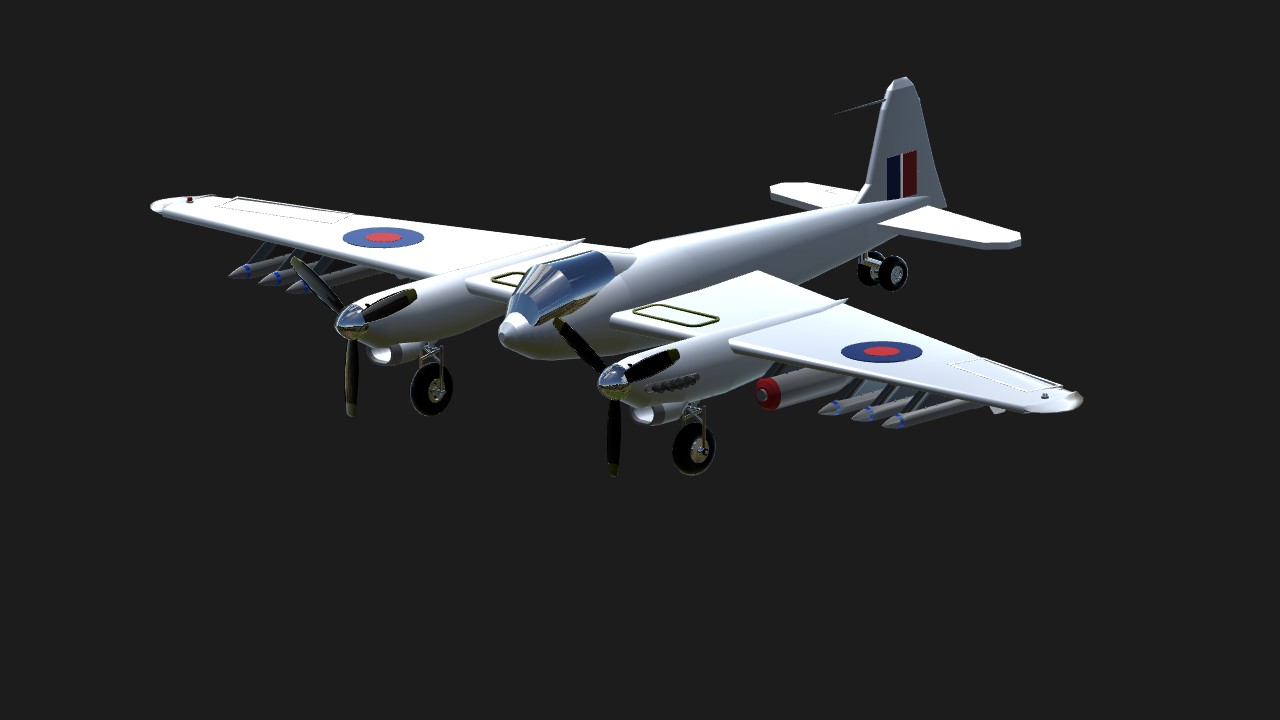
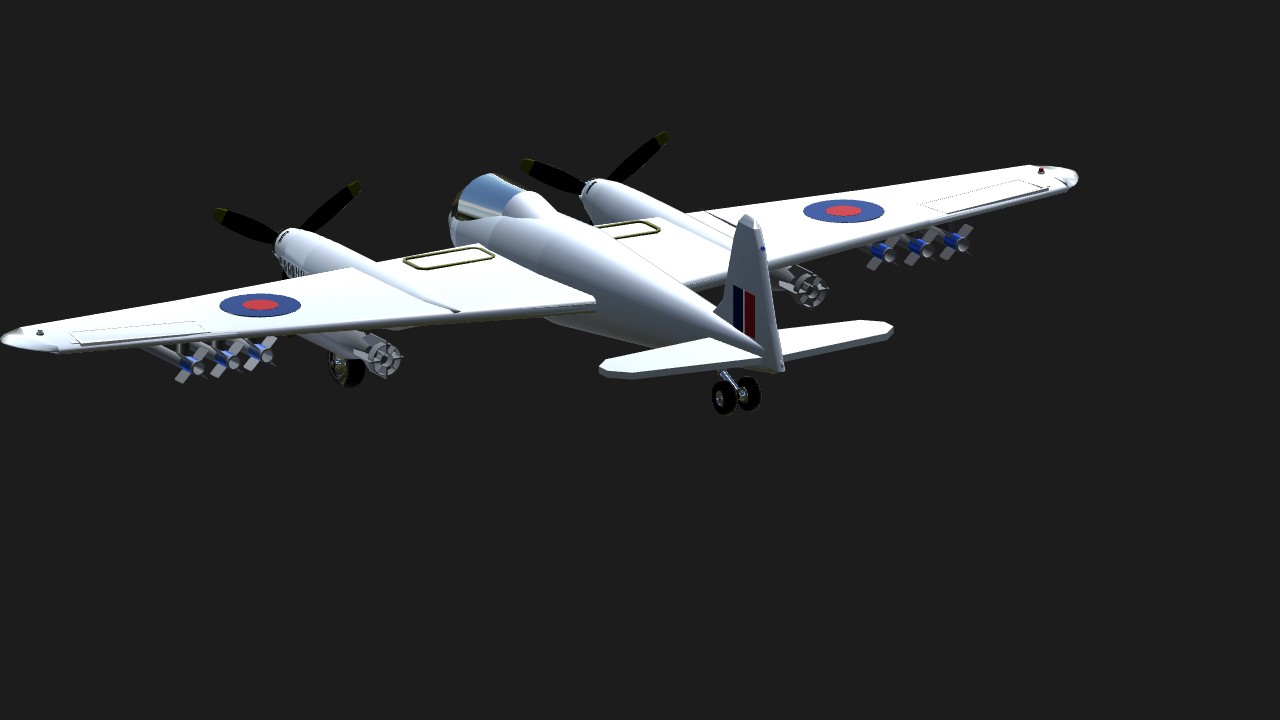
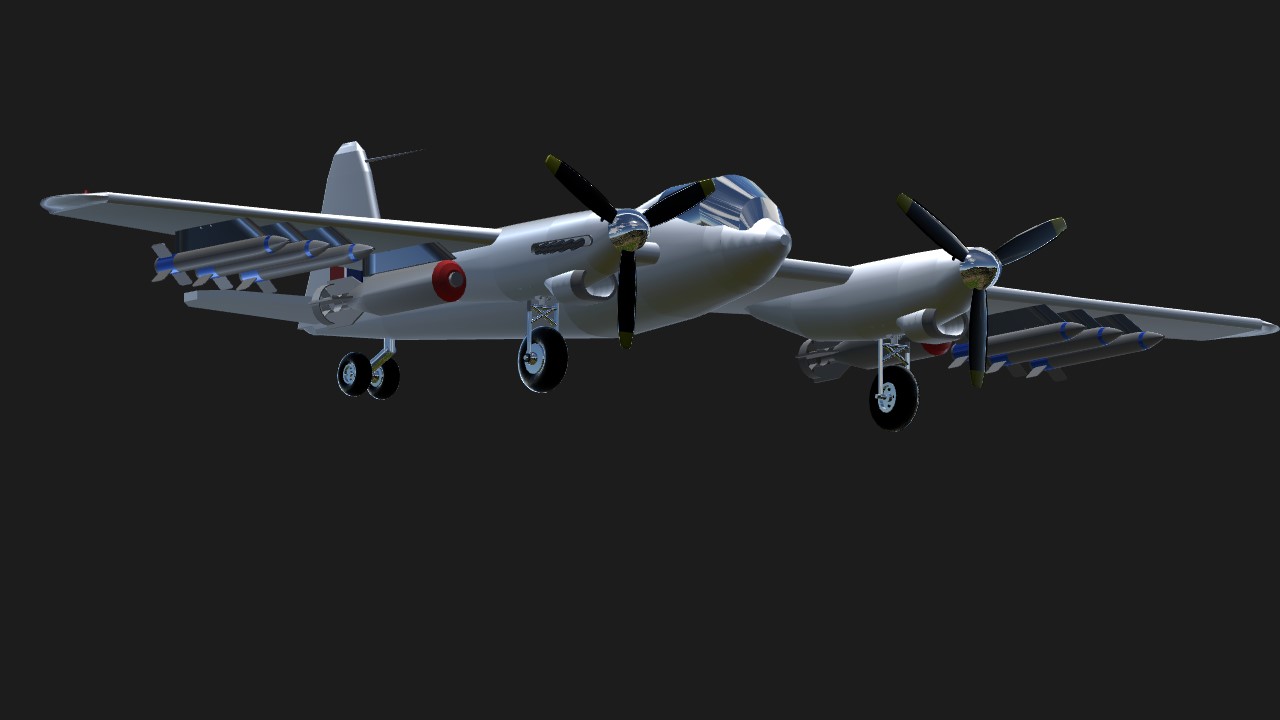

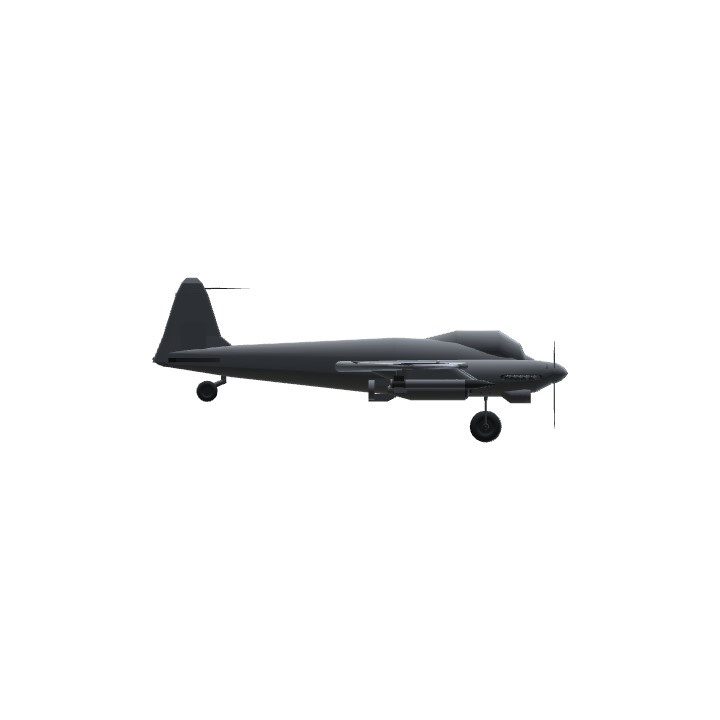
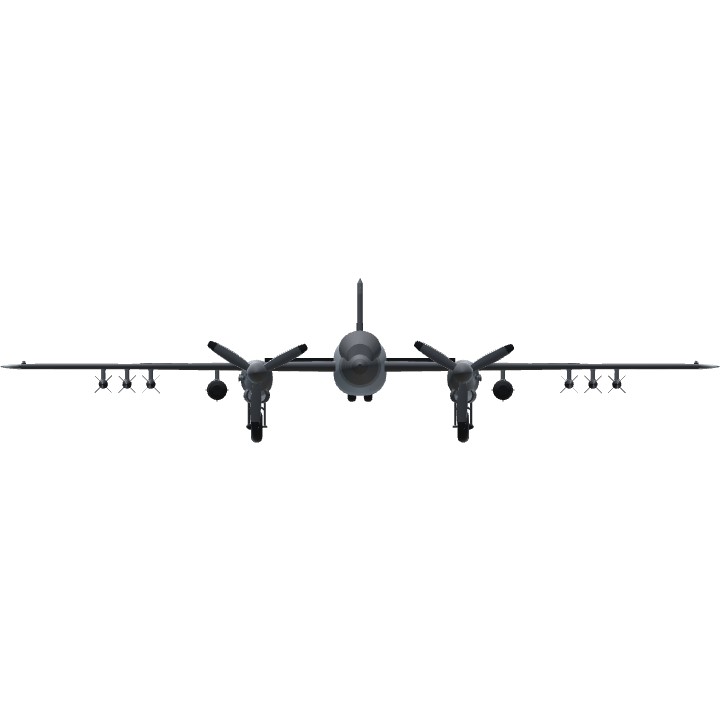
@ND40X
This is a whole paper for college
@ND40X Thank you :P
@SubXTribe Thank you for this mosquito. I will get to testing it ASAP
You put more effort into this description then I do my builds